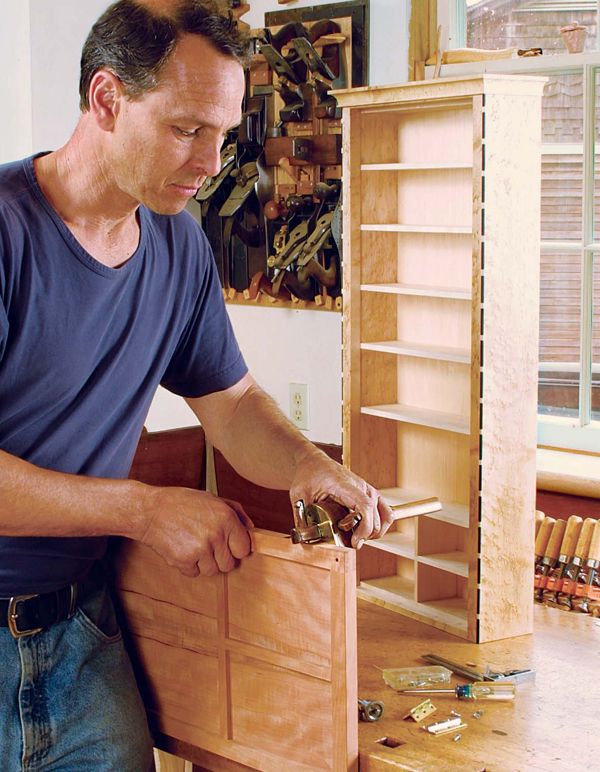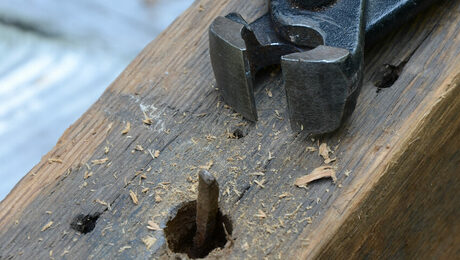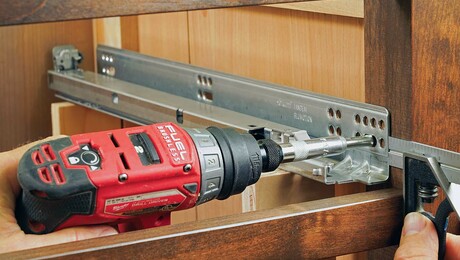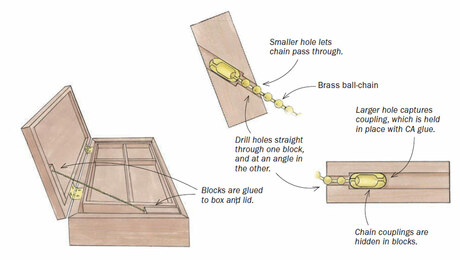Installing Butt Hinges
The right hinges make a difference when it comes to looks, performance and longevity
Synopsis: You can’t beat butt hinges for durability, clean looks, and straightforward installation. Garrett Hack demonstrates the most common use for them — hanging an inset cabinet door and walks readers through the entire process from chiseling the hinge mortise to hanging the door. Once you’ve mastered this, you can handle any other application. He explains the best choices of hardware for various projects, how many hinges you should use, where they should be located, and how they’re made.
You can’t beat butt hinges for durability, clean looks and straightforward installation. I’ll demonstrate the most common use for this hinge: hanging an inset cabinet door. If you can install hinges in this type of flush door, you can handle any other butt-hinge application.
Woodworking catalogs offer a variety of butt hinges—some steel, others brass; some with thick extruded leaves; others pressed from thin metal. Some hinges, such as those for a jewelry-box lid, have a built-in stop. While these hinges come in a range of lengths and widths, they all have two flat leaves—usually the same size— with a barrel, or knuckle, joining them.
For fine furniture, brass hinges are always my first choice. The best of these have thick leaves that make a strong hinge. Often the leaves are tapered, so they’re thicker toward the knuckle for strength where you need it. Low-cost butt hinges are made by pressing thin sheet metal around the pin to form the knuckle. Extruded hinges are tighter than these pressed hinges because the knuckle is fitted together and then drilled in one shot for a precisely fitted hinge pin. Extruded hinges cost more and may not be available in your local hardware store, but they will keep your doors swinging smooth and true for a long time.
Steel is stronger and tougher than brass, but brass hardware usually looks better on fine furniture and ages well. I avoid steel hinges for another reason: They rust. Summer humidity or storage in a basement or unheated space can discolor and tighten a steel hinge. For these reasons, there’s a far wider selection of brass hinges than steel.
Pick the right hinge for your door
Two numbers typically describe a butt hinge: the length of the hinge (listed first) and the fully open width (second). A typical cabinet-door hinge is 2 in. by 11 ⁄4 in., with leaves 2 in. long and 5 ⁄8 in. wide.
From Fine Woodworking #159
For the full article, download the PDF below:
Fine Woodworking Recommended Products

Bessey EKH Trigger Clamps

Jorgensen 6 inch Bar Clamp Set, 4 Pack

Stanley Powerlock 16-ft. tape measure






















Log in or create an account to post a comment.
Sign up Log in